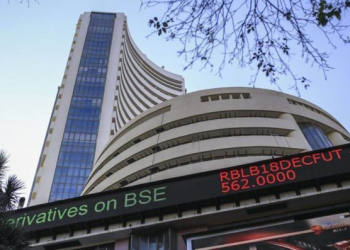New Delhi: India’s November CPI printed 5.9 per cent y/y, well below consensus, driven by faster-than-expected disinflation in vegetables. Last month, we highlighted encouraging early signs for India’s food inflation. This includes the ongoing seasonal fall in vegetable prices, softer growth in prices of pulses and edible oils, healthy progress in rabi season sowing (particularly for wheat) and moderation in global food prices & farm input costs.
Cereal inflation has been a concern and was strong in the November print too but rice stock is comfortable and there are recent reports of the Food Corporation of India considering offloading some of its wheat stock to ease prices.
However, core inflation continues to remain elevated and sticky, averaging 6 per cent for over two years and registering the same even in November. RBI’s Monetary Policy Committee, in its statement after the December 7 meeting, noted the need to break core inflation persistence and contain second round effects. Specifically, the Governor said, “the resurgence in domestic services sector activity could also lead to price increases, especially as firms pass on input costs”.
Therefore, in this note, we study core inflation by splitting it into goods and services, understanding the component-level drivers behind them and thus what could lie ahead. While core goods inflation could further moderate, in line with fall in commodity prices and WPI inflation, core services inflation could be stickier although the global growth slowdown ahead should help.
A basic split of core inflation into goods-excluding-food and services-excluding-housing shows us pickup in the former post the onset of the pandemic, driven more by supply, and the sticky nature of the latter alongside its increase more recently.
In our study, we focus on the Miscellaneous category in the CPI basket and its split into core goods and services. This excludes the clothing and footwear category (6.5 per cent weight in CPI) which has risen sharply from an average of 3.4 per cent y/y in FY21 to 7.2 per cent in FY22 and 9.8 per cent during Apr-Nov of FY23. Almost fully goods, the pickup in this category is well documented and not surprising given the pickup in cotton yarn prices. We also exclude the housing category (10.1 per cent weight in CPI) given it is dominated by a single component ‘house rent’ which can skew our study of services. We thus look at about a quarter of the CPI basket or 52 per cent of the typically defined core CPI basket, within which goods and services have almost an equal share. We exclude petrol, diesel, gold and silver as they are volatile .
We see that inflation in several core categories has been close to or above 6 per cent in the last few months. For goods, average y/y inflation has been above 6 per cent in FY22 and so far in FY23 for five out of the six categories. For services, the magnitudes are lower and three out of the six categories have average 6 per cent+ inflation so far in FY23. However, it has directionally picked up in FY23 for the two main categories where services have the main share – Education and Transport & communication.
Core goods – Is the worst behind us?
Goods inflation within most categories has been elevated in the last year, with only education goods below 6 per cent, but even that is inching up. Directionally, only recreation goods has been slowing. Health, household goods and personal care are the three categories which have a significant share of goods and all remain elevated.
A few components like medicines, motorcycles and hair oil are off its recent peaks but continue to mostly remain elevated. Soap stands out in terms of the very sharp pick up in prices vs. other components, in line with price hikes announced by multiple companies during the current year as they passed on higher input costs.
Overall, prices of most core goods remain high but it could now witness slower growth as commodity prices have already been falling. India’s WPI inflation has moderated from a peak of 16.6 per cent in May to 8.4 per cent in October. With global inventory levels high and export outlook deteriorating, weaker industrial production and inventory
Core services – Input price pressures vs. global growth slowdown?
An RBI study, published in its April 2021 Monetary Policy Report, said “Services inflation, on the other hand, represents the relatively sticky component in the CPI basket and can spill over to goods inflation, resulting in generalised inflationary pressures”. The buoyant domestic services sector with the possibility of passing through input costs is thus of concern.
Transport & Communication, Education, Recreation and Health are the four categories which have a significant share of services in the Miscellaneous basket. While a few have moderated, some major components within health, education and transport & communication are higher
Thus, while goods have witnessed broad strength in prices, services prices have picked up as the sector gathered strength after economic reopening and manifestation of pent-up demand. As central banks raise policy rates and likely hold them higher for longer to tame inflation, the global growth slowdown ahead could act as a broad domestic demand dampener with a lag. Slowing prices of commodities, particularly oil, also could bring down price growth in some services like transport fares.
However, pricing power and decision of companies in various service sectors matter. For example, companies could raise prices if competition is weak or if they wish to cater to only that segment which is less price elastic, i.e., focus on lesser quantity but higher prices. Further, unlike for goods, government supply side measures to alleviate any inflationary pressures is more difficult in services.
Easier food for now, core goods could ease but keep a tab on services
Seasonal food price momentum fell more than expected in November but almost entirely driven by the sharp fall in vegetable prices. Cereal inflation stays high but there are encouraging signs within the food basket. Core inflation, elevated for some time now, was recently highlighted by the RBI as an area of concern.
Core-goods have witnessed broad and strong price growth across categories and even when dissected to the component level. The fall in commodity prices, moderation in India’s WPI and high global goods inventory (vs. shipments) should aid softer growth here. However, core-services which tend to be sticky and could spillover into goods prices, have risen gradually and more recently.
While the global growth slowdown ahead could soften domestic demand for services also thus price growth, pass through of input cost pressures and pricing power of companies matter. Second round effects, such as a wage-price spiral, would depend on price growth in all goods and services (not just core) and wage growth (which is currently not very strong in the case of rural wages).
(IANS)




















